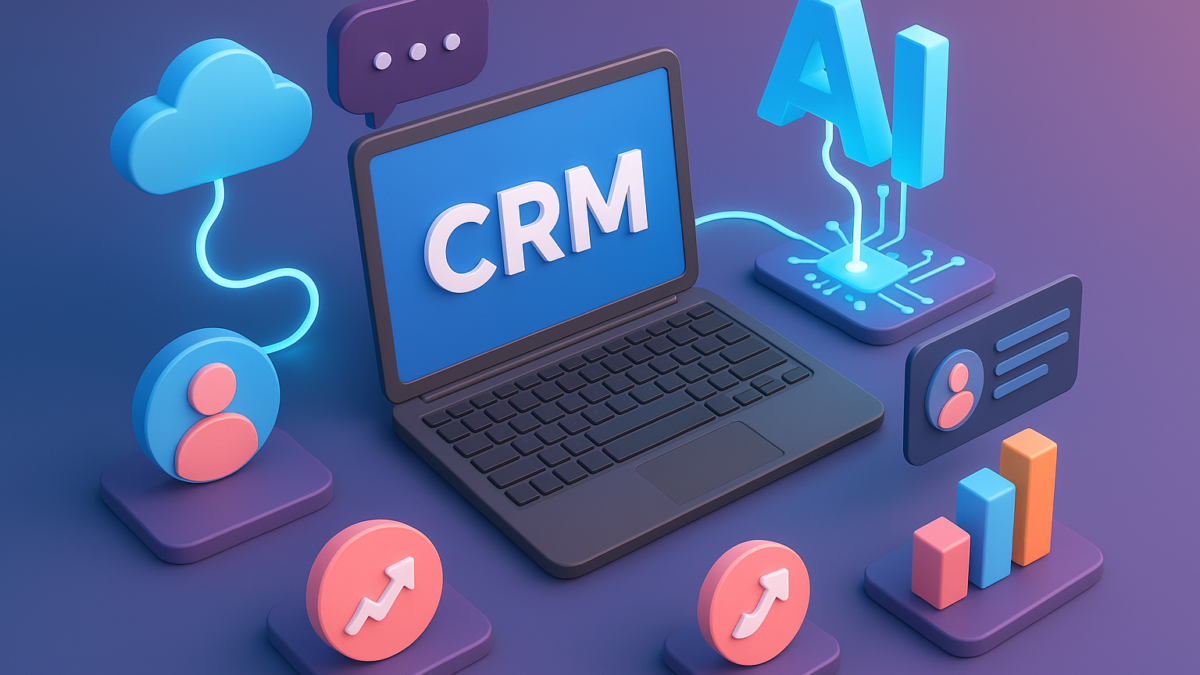The Convergence of CRM and AI: Redefining Customer Engagement Metrics
Table of Contents
Introduction: A New Era of Customer Engagement
Customer engagement has always been the lifeline of successful businesses. Traditionally, companies measured it through open rates, clicks, or call response times. But in 2025, those metrics are no longer enough.
With the convergence of Customer Relationship Management (CRM) systems and Artificial Intelligence (AI), businesses can now track engagement in far more meaningful ways. This fusion doesn’t just capture surface-level interactions—it redefines what engagement truly means by analyzing context, intent, and long-term relationship value.
Why Traditional Metrics Fall Short
Classic engagement metrics—like email open rates or call durations—paint an incomplete picture. For example:
- A customer might open an email but have zero intent to purchase.
- A long call might indicate frustration rather than satisfaction.
- Raw numbers don’t explain why customers engage or disengage.
Businesses need metrics that go deeper, offering predictive and prescriptive insights. That’s where AI-powered CRM platforms change the game.
How AI Transforms CRM Data into Insights
1. Predictive Engagement Scoring
AI can evaluate millions of data points to predict which customers are most likely to engage, churn, or convert. Instead of reactive metrics, businesses gain proactive intelligence.
2. Sentiment Analysis
Through natural language processing (NLP), AI can analyze customer emails, chats, or social media posts to understand tone and intent—helping brands measure emotional engagement, not just activity.
3. Contextual Journey Mapping
AI-enhanced CRMs track not only what customers do, but also where they are in the journey. Engagement metrics are now tied to lifecycle stages, from awareness to loyalty.
4. Hyper-Personalization
By combining CRM history with AI algorithms, businesses can measure how personalized recommendations influence engagement. Instead of generic metrics, companies can track individualized responses at scale.
The New Engagement Metrics in 2025
The convergence of CRM and AI has introduced a new set of metrics that go beyond clicks and calls:
- Customer Sentiment Index (CSI): Measures emotional tone across multiple touchpoints.
- Predictive Churn Score: Flags disengaged customers before they leave.
- Lifetime Engagement Value (LEV): Quantifies total interaction quality over the customer lifecycle.
- AI-Driven NPS (Net Promoter Score): Uses predictive analytics to estimate advocacy potential, not just survey responses.
- Content Resonance Rate: Tracks how well personalized recommendations perform with individual users.
These metrics help businesses move from transactional engagement to relational engagement.
Real-World Applications
SaaS Industry
A SaaS provider integrated AI into its CRM to track customer health scores. By combining login frequency, support ticket sentiment, and upsell readiness, they created a predictive engagement dashboard that reduced churn by 20%.
Retail & E-commerce
Retailers use AI-powered CRMs to analyze shopping history, browsing behavior, and sentiment from reviews. Engagement metrics now include “propensity to buy” scores, which directly inform targeted campaigns.
Financial Services
Banks track engagement not only through transactions but also sentiment in customer service chats. AI-powered CRMs surface dissatisfaction early, helping prevent attrition.
Benefits of CRM + AI for Engagement
- Deeper Customer Understanding
Move beyond shallow metrics to insights about intent, emotion, and loyalty. - Proactive Engagement
Predict disengagement and re-engage customers before it’s too late. - Revenue Growth
Personalized engagement drives upsells, cross-sells, and higher lifetime value. - Stronger Relationships
Customers feel understood and valued when businesses tailor outreach to their needs.
Challenges to Consider
- Data Privacy & Compliance: AI-powered insights rely on data. Companies must handle it transparently under regulations like GDPR and India’s DPDP Act.
- Integration Complexity: Combining AI with existing CRMs can be resource-intensive.
- Bias in AI Models: Poorly trained models risk misinterpreting sentiment or engagement patterns.
- Change Management: Teams must adapt to new ways of measuring and acting on engagement.
The Future of CRM and AI Convergence
Looking ahead, CRM and AI integration will push engagement metrics even further:
- Voice & Multimodal Analytics: Tracking sentiment across calls, video, and even facial expressions.
- Digital Twin Customers: AI models simulating customer behavior to forecast engagement outcomes.
- Engagement-as-a-Service: Platforms offering plug-and-play predictive engagement modules for SMBs.
- AI-Driven Relationship Scores: Unified metrics blending sentiment, value, and advocacy into a single engagement index.
The future is clear: customer engagement will be measured by depth and quality, not just activity volume.
Final Thoughts
The convergence of CRM and AI is more than a tech trend—it’s a redefinition of customer engagement itself. By moving beyond vanity metrics and embracing predictive, sentiment-driven insights, businesses can understand customers like never before.
For B2B and B2C brands alike, success in 2025 will belong to those who treat engagement as a relationship metric, not just a click metric.
Call-to-Action (CTA)
Want to harness AI-driven engagement for your business?
Explore how B2B Content Syndication Services can complement your CRM strategy, helping you reach the right decision-makers with the right content at the right time.
You May Also Like: Whitepapers and the Trust Economy: Building Credibility in a Skeptical B2B World





